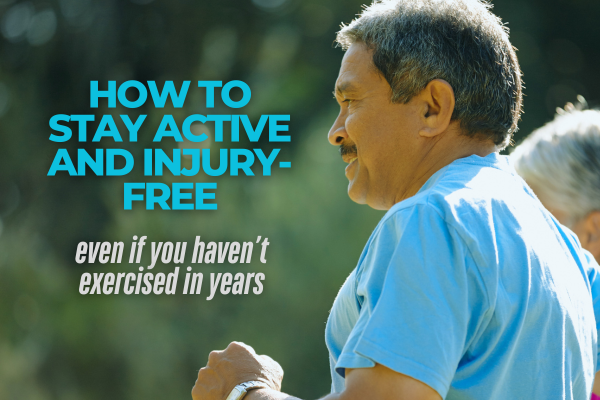If it’s been years since you last exercised, you might feel hesitant to start again. Maybe you worry about getting injured, feeling out of shape, or simply not knowing where to begin. But here’s the good news: it’s never too late to get active and stay active, and you can do it safely.
Regular movement improves flexibility, balance, strength, and overall health. It can help reduce the risk of chronic illnesses, ease joint pain, and even boost your mood. The key is to start where you are, listen to your body, and make movement an enjoyable part of your daily life.
If you’re ready to move more but want to do so without injury, here’s how to begin safely and successfully.
1. Start Slow and Build Gradually
One of the biggest mistakes people make when returning to exercise is doing too much too soon. Your body needs time to adjust, especially if you haven’t been active for a while.
Begin with low-impact activities like walking, swimming, or gentle stretching. Start with 10-15 minutes a day and gradually increase the duration and intensity over time. The goal is progress, not perfection.
2. Focus on Mobility and Flexibility First
As we age, our joints and muscles can become stiffer, increasing the risk of injury. Before jumping into strength or cardio workouts, focus on mobility and flexibility.
Incorporate gentle stretching or yoga to help loosen tight muscles and improve your range of motion. Simple movements like arm circles, neck stretches, and gentle spinal twists can make a big difference in preventing injuries.
3. Prioritize Strength Training
Strength training is one of the best ways to maintain muscle mass, improve bone density, and prevent falls. You don’t need heavy weights—bodyweight exercises, resistance bands, or light dumbbells can be highly effective.
Exercises like squats, lunges, wall push-ups, and seated leg lifts can help build strength in a safe and controlled way. Aim for two to three strength sessions per week, allowing time for rest and recovery between workouts.
4. Listen to Your Body
Pain is your body’s way of telling you something is wrong. While mild soreness is normal, sharp pain or discomfort is not. If an exercise feels wrong or causes pain, stop and modify the movement.
It’s also important to take rest days and avoid pushing through fatigue. Recovery is just as important as exercise when it comes to staying injury-free.
5. Find Activities You Enjoy
Exercise doesn’t have to mean hours at the gym. The best way to stay consistent is to find activities you genuinely enjoy—whether it’s dancing, gardening, cycling, or hiking.
When movement feels like fun rather than a chore, you’re more likely to stick with it. Stay open to trying new things and discovering what brings you the most joy.
6. Stay Hydrated and Fuel Your Body
Proper hydration and nutrition play a key role in staying injury-free. Drink plenty of water, especially if you’re sweating, and fuel your body with nutrient-rich foods that support muscle recovery and energy levels.
Movement is Medicine—Make It a Lifestyle
No matter your age or fitness level, staying active is one of the best things you can do for your body and mind. The key is to start small, listen to your body, and find joy in movement.
Your health is worth the effort, and your body will thank you for every step, stretch, and squat you take. It’s not about where you start—it’s about making movement a regular and rewarding part of your life.
So, lace up your shoes, take that first step, and enjoy the journey of staying strong, mobile, and injury-free for years to come!
Jay


